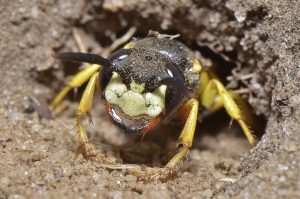There is a common misconception that ivy “damages” trees, but it is important to realize that Ivy is a native species and is a normal component of most, if not all, woodland sites.
Ivy provides a valuable habitat for small mammals (including bats), birds and insects (including bees, hoverflies and butterflies). Its woody structure and evergreen nature provides safety, roosting, hibernation and nesting opportunities all year round. Whilst its berries provide an important food source for birds during winter, its long flowering season means it is an important source of late season nectar for bees and other invertebrates. It can also provide year-round ground cover and reduce the effect of frost hardening the ground in winter months, which means animals can continue to forage in the leaf litter during extreme cold weather (Woodland Trust, 2020).
The Woodland Trust states “Ivy uses trees and walls for support, allowing it to reach upwards to better levels of sunlight. It is not a parasitic plant and has a separate root system in the soil and so absorbs its own nutrients and water as needed. Ivy does not damage trees and its presence doesn’t indicate that a tree is unhealthy, and it doesn’t create a tree-safety issue.”
Another misconception is that ivy blocks the tree from photosynthesising. An already weakened or dying tree might appear to be failing because of the ivy, the ivy being more obvious than any fungal, bacterial or viral infections that may be blighting the tree. Ivy may help create a sort of sail effect in some trees. If it is old, declining or disease-weakened a tree is more vulnerable to structural damage in strong winds. The ivy only marginally increases that risk.
Action to remove ivy from trees would negatively impact on a valuable wildlife resource, without meaningfully reducing any risk of tree damage; Indeed, there have been instances locally where poorly executed ivy removal has actively damaged trees.
Where there is a tree safety management issue an assessment should be made if the tree is safe. If it represents a risk, the tree should then be dealt with appropriately and whilst the presence of ivy might marginally increase the risk, it is the health of the tree and its core structure that is the problem.
RNCSIG would recommend that tree condition be monitored by land owners and farmers to prevent damage, loss or danger irrespective of the presence of ivy. Removal of ivy is unlikely to represent a solution. Where there is concern for tree safety, remedial advice should be sought.

